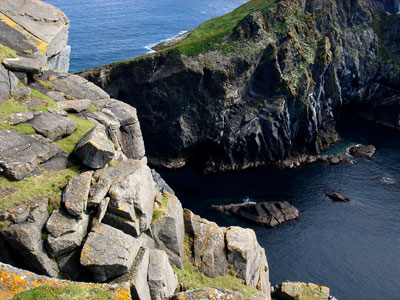 |
|
The Island
Historic Background
The Human Zoo
An Ubiquitous Opera
Biographies
The Venue in Düsseldorf
Participants
Press
© 2025 EVKM
|
|
An Ubiquitous Opera Like the radar that still transmits from the military tracking station set up by the British Army during the Cold War, a virtual life pulse, like a soul wave, continues to transmit from Saint Kilda, uniting the human memory of the island to the rest of the world.
The Opera with the title "Island of the Bird-Men" is born out of this human impulse. It develops from the music, the movements, the language. Respecting the inspiration and the rules of that archaic culture it nonetheless avails itself of modern cultural communication methods.
All these images and sounds, mixed with what nature has to offer us, will be transmitted from Saint Kilda by satellite (or High-definition Internet) towards the mainland and the various performance sites on the European continent. There they will combine with choral and instrumental groups which will underline, comment upon or amplify their variegated significance. The theatrical actions combined with the images received on projection screens in each performance site will make up the whole work; An ubiquitous opera.
Sound techniques will allow us to underline the entire musical work using very (or not at all) sophisticated sounds: The wind, the sea in all its states, large sea-birds, and the native language. In short, we will be using the entire background of this extraordinary humanity to nourish our inspiration; the sense of greatness, eternity, the paradox of the smallness of the islands, the closed horizon and the immensity of this part of the Atlantic Ocean and its mystery. The Gaelic language is, of course, another influence. The musical impulse on St. Kilda comes from ancient Gaelic songs of work and entertainment. The intensity of the songs defines the "answers" from the mainland and the continent.
|
promoted by:
| |||||||



